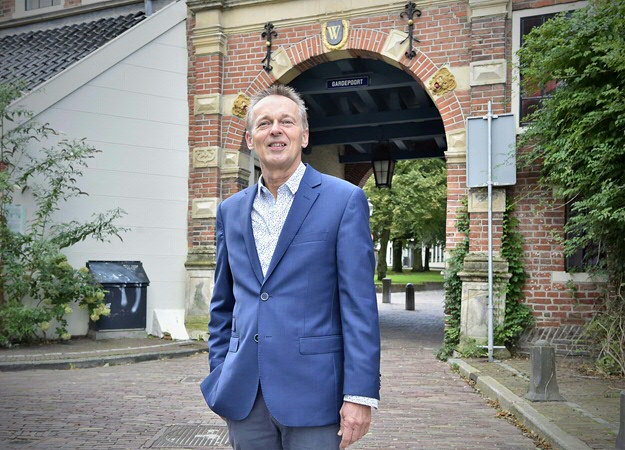Newspapers in former times: between reporting and propaganda

Newspapers first made their appearance in the Netherlands as early as 400 years ago. They mostly consisted of eyewitness accounts, which were as reliable or unreliable then as they are today. Historian Joop Koopmans talks about the news in early modern times and points to differences from and similarities with today’s news. In those days, newspapers mostly reported on international (political) news – which sometimes led to a reprimand.
What kind of people read newspapers in the early modern period (circa 1500-1800 AD)?
'In the Netherlands, we had long-running newspapers as early as 1618. In the 17th century, there were only a handful, with the most important ones being published in Amsterdam and Haarlem. Before 1800, most newspapers appeared no more than three times a week, with only a front and a back page. They were mostly read by the educated classes, although regular people could also afford them, as apparent from sources such as letters from seaman’s wives. Newspapers were also read out loud, for example in coffee houses. This meant that they had a much wider reach than their circulation would suggest. In the 17th century, newspapers printed hundreds of copies at a time, increasing to thousands of copies in the 18th century. It was also around this time that newspapers first appeared in the North: first in Groningen in 1743, then in Leeuwarden in 1752, with a title that exists to this day: the Leeuwarder Courant.'
How credible were the reported facts in a world without radio, TV, and on-site reporters?
'Newspapers mostly contained fragments of letters by news writers and translated items from foreign newspapers. In other words, they consisted of eyewitness accounts, which were as reliable or unreliable then as they are today. Of course, newspaper writers could not easily check whether the news they received was correct, so they tried as much as possible to collect news from different sources, leaving readers to compare different reports. Editors would often open their articles with phrases like ‘It is rumoured that...’ or ‘It has come to our attention that...’, to protect themselves in case of inaccuracies. Early modern readers were also aware of the fact that the news could be used for propaganda. For example, the French preferred French-language newspapers published in the Netherlands to French newspapers, which were strictly censored.'
Did people only write about local or national news? Or did they sometimes report on events abroad?
'They most certainly did. In fact, Dutch newspapers mostly focused on political news from surrounding countries and the rest of Europe. Very occasionally, they would also report on the world outside Europe, based on information obtained via ships from the trade companies. Newspapers began with news from afar and ended with local news. On the front page you would find weeks’-old information from Turkey or Portugal, and on the back page the news of the day from your own province. Newspapers rarely reported on national politics, doing so only when the authorities had released an official report. They basically self-censored to avoid losing their publication rights. Plus, local news spread much faster by word of mouth than via newspapers. However, you could read local announcements in the advertisement sections that were increasingly included in the newspaper.'

Did foreign powers in those days already try to form public opinion and thus influence people?
'Foreign ambassadors sometimes complained to the States General in The Hague after reading unfavourable news about their monarch or country in the newspaper. The States General then forwarded this criticism to the city authorities, who in turn sometimes called the newspaper writers to account. In practice, it was mostly lip service, and few punitive measures were imposed. Rectifications were also rare. Especially in times of war, many countries tried to make their position appear more favourable than it was, for example by underplaying their losses and overestimating those of the enemy. Dutch newspaper writers responded by reporting both sides of the issue, leaving readers to draw their own conclusions. This was usually easier to do in retrospect, once more was known about the relevant situation. For more accurate news, one could consult periodical overviews that summarized newspaper reports. A leading example of this kind of overview was the Europische Mercurius, which appeared twice a year in the late 17th century and early 18th century, with approximately 300 pages per edition.'
What made the Europische Mercurius so special?
'For many years, the Europische Mercurius was unique in its genre. In 1690, this periodical pushed its predecessor, the Hollandsche Mercurius, which had appeared as an annual overview since 1651, off the market. This news medium was read by regents, diplomats, merchants, church ministers and lawyers, basically the elite class who were also putting together private libraries. These reference works were meant to be kept on a bookshelf, not reused as wrapping paper or thrown away as newspapers were. This is also apparent from the fact that entire series of the Hollandsche and Europische Mercurius later surfaced in auctions. I was unfortunately unable to find out how many copies of these periodicals were printed, so it is unclear how many readers they had.'
Who were the creators of these periodicals and what was striking about them?
'The editors were only listed on the title page with their initials. So far, only a few of them have been identified, including Laurens Arminius, a great-grandson of the famous theologian Jacobus Arminius. What was remarkable about the Europische Mercurius were the frontispieces on the front page, which acted as eye-catchers, a function later reserved to book covers. These frontispieces, created by artists like Jan Luyken and Jan Goeree, offered a visual overview of news topics from the corresponding six months. This was done in the form of an allegory that required readers to have some knowledge of mythology. For example, the gods Mars and Pax symbolized war and peace, and the unicorn represented Great Britain. I talk about this in greater detail in my book, Het nieuws verbeeld: Oorlog en vrede in de titelprenten van de Europische Mercurius (1690-1750) [Representations of the News: War and Peace in the Frontispieces of the Europische Mercurius (1690-1750)].'
More information
- Joop Koopmans
- See also an earlier interview with Joop Koopmans about the Europische Mercurius (video in Dutch).
| Last modified: | 27 October 2021 10.16 a.m. |
More news
-
10 June 2024
Swarming around a skyscraper
Every two weeks, UG Makers puts the spotlight on a researcher who has created something tangible, ranging from homemade measuring equipment for academic research to small or larger products that can change our daily lives. That is how UG...
-
21 May 2024
Results of 2024 University elections
The votes have been counted and the results of the University elections are in!
